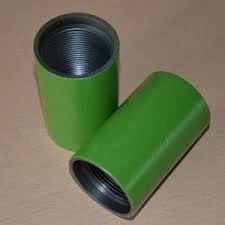Key Differences Between Casing and Tubing in Oil and Gas Operations
Differences Between Casing and Tubing in Oil and Gas Drilling
In the oil and gas industry, the terms casing and tubing are often encountered, and while they may appear similar, they serve distinct functions in the drilling process. Understanding these differences is essential for anyone involved in the exploration and production of hydrocarbons. This article will delve into the roles, specifications, and installation methods of casing and tubing to highlight their unique attributes.
Casing The Structural Backbone
Casing refers to the series of pipes that are installed in the borehole once the drilling is completed. Its primary purpose is to provide structural integrity to the wellbore, preventing it from collapsing and protecting the environment from the fluids contained within the well. Casing serves as a barrier between the outside environment and the interior of the well, particularly in areas where groundwater supplies may be present.
The casing process involves several steps. After drilling a section of the well, the operator will insert and cement the casing to lock it in place. This cementing process creates a seal, providing the necessary stability and ensuring that the well is secure. The casing types include surface casing, intermediate casing, and production casing, each designed to withstand the unique conditions of different well depths and environments.
Surface casing protects the shallow groundwater and prevents contamination, while intermediate casing is utilized to manage pressure and prevent fluid migration between formations. The production casing, on the other hand, is placed in the section of the well that will produce oil or gas.
Tubing The Production Pathway
In contrast, tubing is installed inside the casing and is responsible for transporting the produced fluids to the surface during the extraction process. Once the reservoir has been completed, tubing is set into position and is typically smaller in diameter than casing. This size difference highlights their distinct roles; while casing provides support, tubing allows for the efficient flow of hydrocarbons.
The tubing installation process is less complex than casing installation, as it often does not require cementing. Instead, it is usually attached to a production head at the surface, allowing for easy access to the wellbore for maintenance or monitoring. Tubing is designed to withstand pressure and corrosive environments, and it is commonly made from high-strength steel, ensuring that it can endure the rigors of transporting crude oil, natural gas, and other fluids.
what are the differences between casing and tubing?

Key Differences
1. Function Casing provides structural support and environmental protection, while tubing serves as a conduit for the production of oil and gas.
2. Placement Casing is installed before the tubing and serves multiple layers outside the tubing in the wellbore.
3. Diameter Casing pipes are generally larger in diameter compared to tubing, reflecting their roles in the well.
4. Installation Process Casing requires cementing for security, whereas tubing is typically simply inserted and connected at the surface.
5. Maintenance Tubing allows easier access for retrieval and replacement, whereas casing, once cemented, is a permanent structure.
Conclusion
In summary, while casing and tubing might seem like interchangeable components in the oil and gas drilling process, they are fundamentally different in purpose, design, and installation. Casing ensures the mechanical integrity of the wellbore and protects surrounding ecosystems, while tubing enables the efficient flow of hydrocarbons from the reservoir to the surface. A comprehensive understanding of these differences is crucial for professionals in the industry to ensure safe and effective drilling operations.
-
Unlock the Benefits of Pup Joints for Your OperationsNewsOct.31,2024
-
The Quality of Casing Couplings from ChinaNewsOct.31,2024
-
The Essential Role of Pup Joints in Drilling OperationsNewsOct.31,2024
-
The Benefits of Tubing Couplings for Your ProjectsNewsOct.31,2024
-
Enhance Your Drilling Operations with Tubing Pup JointsNewsOct.31,2024
-
Elevate Your Drilling Operations with Tubing CrossoversNewsOct.31,2024







